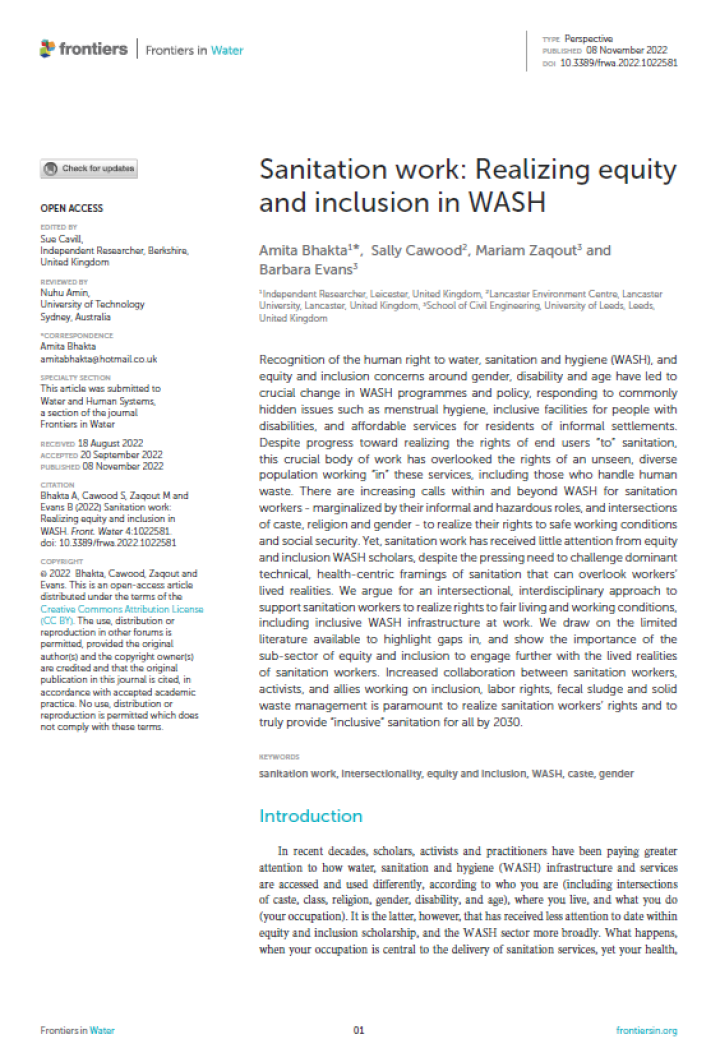Sanitation work: Realizing equity and inclusion in WASH Amita Bhakta, Sally Cawood, Mariam Zaqout and Barbara Evans (2022)
Recognition of the human right to water, sanitation and hygiene (WASH), and equity and inclusion concerns around gender, disability and age have led to crucial change in WASH programmes and policy, responding to commonly hidden issues such as menstrual hygiene, inclusive facilities for people with disabilities, and affordable services for residents of informal settlements. Despite progress toward realizing the rights of end users “to” sanitation, this crucial body of work has overlooked the rights of an unseen, diverse population working “in” these services, including those who handle human waste. There are increasing calls within and beyond WASH for sanitation workers -marginalized by their informal and hazardous roles, and intersections of caste, religion and gender - to realize their rights to safe working conditions and social security. Yet, sanitation work has received little attention from equity and inclusion WASH scholars, despite the pressing need to challenge dominant technical, health-centric framings of sanitation that can overlook workers’ lived realities. The authors argue for an intersectional, interdisciplinary approach to support sanitation workers to realize rights to fair living and working conditions, including inclusive WASH infrastructure at work. They draw on the limited literature available to highlight gaps in, and show the importance of the sub-sector of equity and inclusion to engage further with the lived realities of sanitation workers. Increased collaboration between sanitation workers, activists, and allies working on inclusion, labor rights, fecal sludge and solid waste management is paramount to realize sanitation workers’ rights and to truly provide “inclusive” sanitation for all by 2030.
Bibliographic information
Amita Bhakta, Sally Cawood, Mariam Zaqout and Barbara Evans (2022). Sanitation work: Realizing equity and inclusion in WASH Frontiers in Water
Filter / Tags
Recommended by SuSanA (other than SuSanA publications)EducatorsPractitionersResearch publicationsEnglishImport to Sanitation Workers PlatformHealth & SafetyGenderDignityHealth & SafetyGenderDignity
External links
Downloads
Sanitation work: Realizing equity and inclusion in WASH
Type: application/pdf
Size: 0.26 MB

